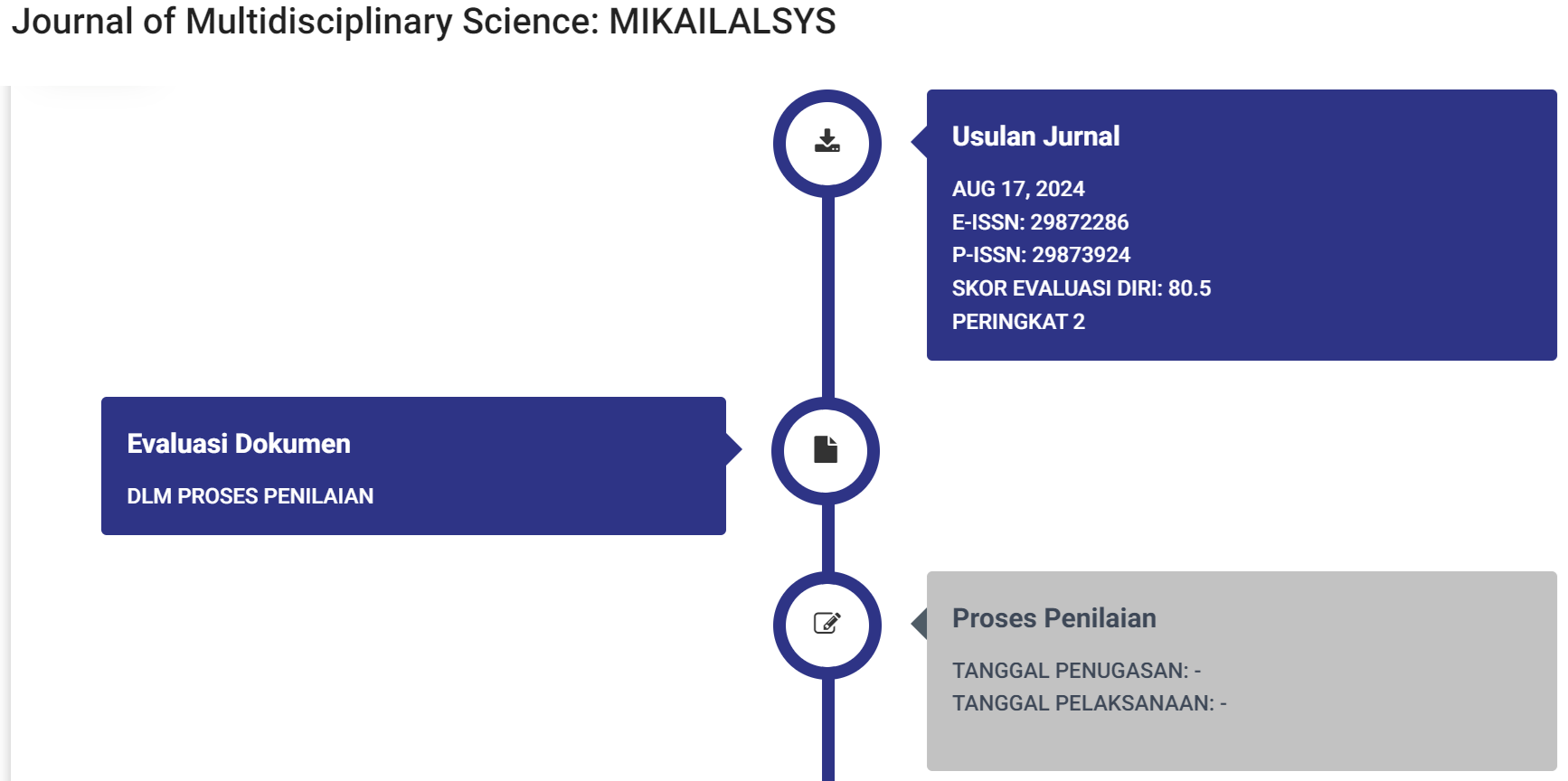Real-Time Monitoring and Control with Wireless Sensor and Actuator Technology
 Digital Object Identifier:
10.58578/mikailalsys.v2i3.3841
Digital Object Identifier:
10.58578/mikailalsys.v2i3.3841
Please do not hesitate to contact us if you would like to obtain more information about the submission process or if you have further questions.

Abstract
This paper explores the implementation of a smart monitoring system within a wireless sensor network, with a particular emphasis on developing a robust routing framework using the Routing Protocol for Low-power and Lossy Networks (RPL). This protocol, is designed to address the unique challenges of low-power and lossy environments. Our approach involves using a streamlined version of the Representational State Transfer (REST) architecture, implemented through a binary web service. This setup minimizes overhead and maximizes efficiency, which is critical for resource-constrained networks. Additionally, we use a publish/subscribe model, where each node in the network makes its resources—such as environmental sensors—available to other nodes interested in them. This model enhances the flexibility and responsiveness of the network. A significant part of our research involves a detailed performance evaluation of RPL. We conducted a series of experiments to understand how various parameters of the RPL protocol affect its performance in a smart grid scenario. Our analysis looks at key metrics such as routing efficiency, energy consumption, and overall network reliability. Through these experiments, we aim to provide valuable insights into how different configurations of RPL can impact its effectiveness. Our findings are intended to guide the optimization of RPL for specific applications, offering practical recommendations for deploying smart monitoring systems in similar low-power, lossy environments. This research not only sheds light on RPL’s performance but also contributes to the advancement of more efficient and reliable wireless sensor networks for smart grids and other related applications.




Citation Metrics:

Downloads

Authors retain copyright and grant the journal right of first publication with the work simultaneously licensed under a Creative Commons Attribution-NonCommercial-ShareAlike 4.0 International License that allows others to share the work with an acknowledgement of the work's authorship and initial publication in this journal.
References
Akyildiz, I. F., Su, W., Sankarasubramaniam, Y., & Cayirci, E. (2002). Wireless sensor networks: A survey. Computer Networks, 38(4), 393-422.
Atzori, L., Iera, A., & Morabito, G. (2010). The Internet of Things: A survey. Computer Networks, 54(15), 2787-2805.
Bower, E., Clayton, T., & Fawcett, T. (2015). Smart grids and the transformation of the electricity sector. Energy Policy, 85, 156-163.
Dunkels, A., & Vasseur, J. (2007). IP for smart objects. Proceedings of the 2007 ACM Conference on Embedded Networked Sensor Systems, 1-12.
Farhangi, H. (2010). The path of the smart grid. IEEE Power and Energy Magazine, 8(1), 18-28.
Farhangi, H. (2010). The path of the smart grid. IEEE Power and Energy Magazine, 8(1), 18-28.
IETF. (2012). RFC 6550: Routing protocol for low-power and lossy networks (RPL). Internet Engineering Task Force. Retrieved from https://www.rfc-editor.org/info/rfc6550
IETF. (n.d.). RPL: IPv6 Routing Protocol for Low-Power and Lossy Networks. (Draft)
Kumar, P., Kumar, V., & Mahapatra, S. (2011). Wireless sensor networks: A review. International Journal of Advanced Research in Computer Science, 2(2), 1-10.
Kumar, P., Kumar, V., & Mahapatra, S. (2011). Wireless sensor networks: A review. International Journal of Advanced Research in Computer Science, 2(2), 1-10.
Kushalnagar, N., Montenegro, G., & Schumacher, C. (2007). IPv6 over low-power wireless personal area networks (6LoWPANs): Overview, assumptions, problem statement, and goals. RFC 4919.
Levis, P., Clausen, T., Hui, J., Gnawali, O., & Ko, J. (2011). The Trickle Algorithm. RFC 6206.
Montenegro, G., Kushalnagar, N., & Hui, J. (2007). Transmission of IPv6 packets over IEEE 802.15.4 networks. RFC 4944.
Oguchi, S., & Ma, T. (2021). A survey on RPL routing protocol for smart grid applications. Journal of Electrical Engineering & Technology, 16(1), 43-57. https://doi.org/10.1007/s42835-020-00062-7
Raza, U., Kulkarni, P., & Voigt, T. (2019). RPL: The routing protocol for low power and lossy networks. In Advanced Wireless Networks and Systems (pp. 69-90). Springer. https://doi.org/10.1007/978-3-030-14779-1_4
Sethi, R., & Sethi, M. (2020). Optimizing RPL for smart grid communication. IEEE Transactions on Smart Grid, 11(3), 2750-2758. https://doi.org/10.1109/TSG.2019.2938354
Shelby, Z., Bormann, C., & Krco, S. (2010). 6LoWPAN: The wireless embedded internet. Wiley.
Strbac, G. (2008). Demand side management: Benefits and challenges. Energy Policy, 36(12), 4419-4426.
Strbac, G. (2008). Demand side management: Benefits and challenges. Energy Policy, 36(12), 4419-4426.
Thompson, D., & Hawkins, L. (2018). Smart grid communication networks: An RPL perspective. International Journal of Network Management, 28(4), e2057. https://doi.org/10.1002/nem.2057
Zhou, K., Fu, C., & Yang, S. (2016). Smart grid architecture and its applications. Renewable and Sustainable Energy Reviews, 55, 1265-1276.
Zhu, L., & Zhao, M. (2022). Enhancing RPL performance for smart grid applications. Journal of Communications and Networks, 24(2), 168-180. https://doi.org/10.1109/JCN.2022.3156269

























